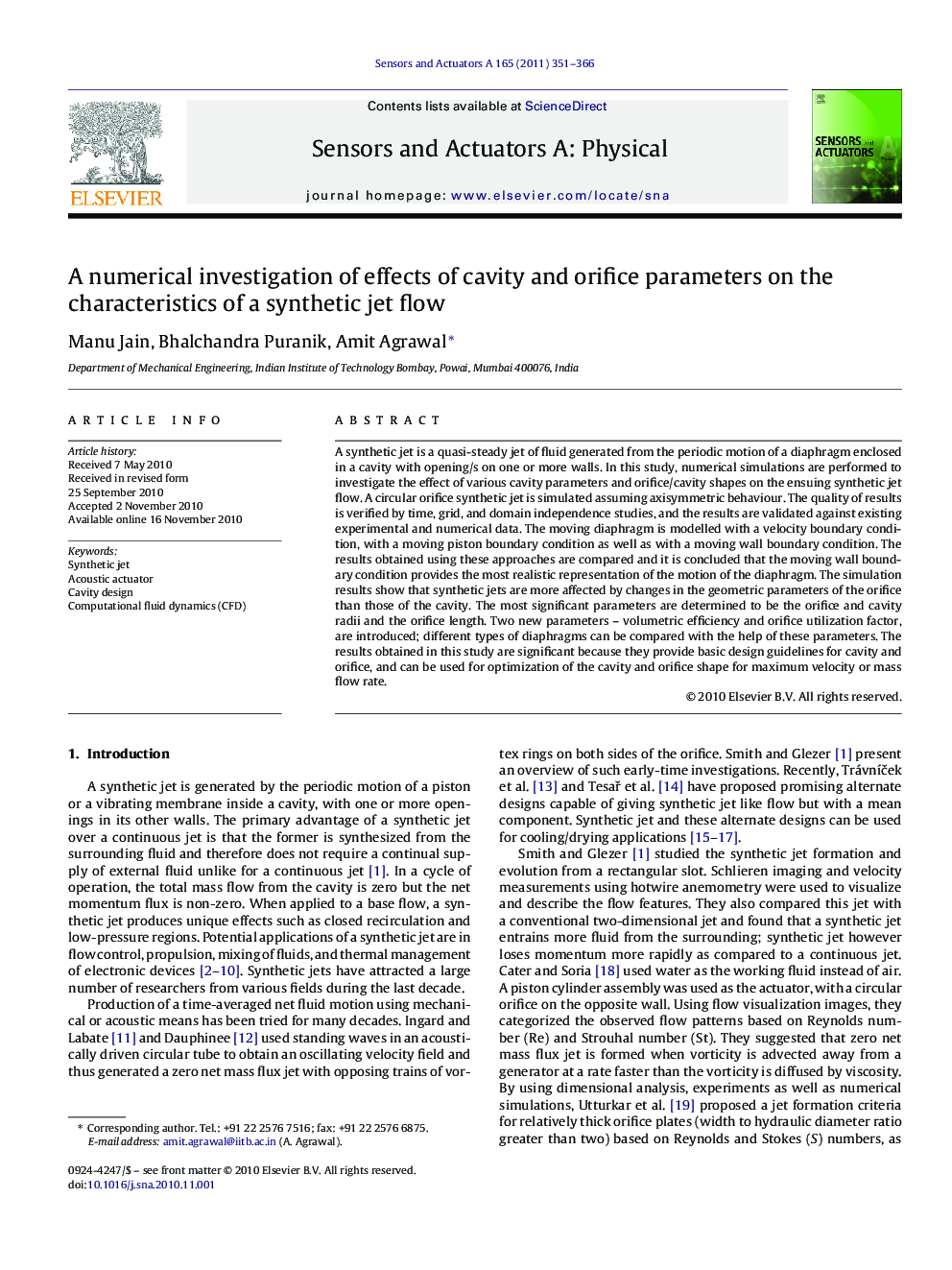| Article ID | Journal | Published Year | Pages | File Type |
|---|---|---|---|---|
| 738273 | Sensors and Actuators A: Physical | 2011 | 16 Pages |
A synthetic jet is a quasi-steady jet of fluid generated from the periodic motion of a diaphragm enclosed in a cavity with opening/s on one or more walls. In this study, numerical simulations are performed to investigate the effect of various cavity parameters and orifice/cavity shapes on the ensuing synthetic jet flow. A circular orifice synthetic jet is simulated assuming axisymmetric behaviour. The quality of results is verified by time, grid, and domain independence studies, and the results are validated against existing experimental and numerical data. The moving diaphragm is modelled with a velocity boundary condition, with a moving piston boundary condition as well as with a moving wall boundary condition. The results obtained using these approaches are compared and it is concluded that the moving wall boundary condition provides the most realistic representation of the motion of the diaphragm. The simulation results show that synthetic jets are more affected by changes in the geometric parameters of the orifice than those of the cavity. The most significant parameters are determined to be the orifice and cavity radii and the orifice length. Two new parameters – volumetric efficiency and orifice utilization factor, are introduced; different types of diaphragms can be compared with the help of these parameters. The results obtained in this study are significant because they provide basic design guidelines for cavity and orifice, and can be used for optimization of the cavity and orifice shape for maximum velocity or mass flow rate.
